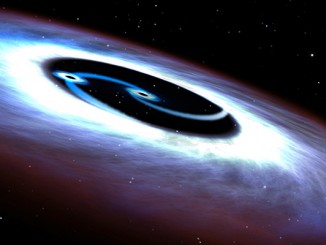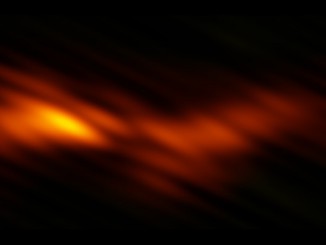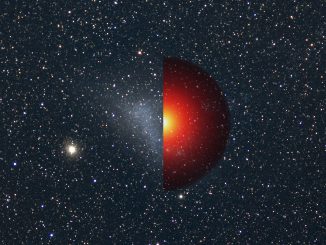
Radio galaxies are colossal, very rare star swarms with supermassive black holes in their cores that are actively accreting gas and dust, generating high-energy jets that accelerate electrically charged particles to enormous velocities. Those jets, clearly observed at radio wavelengths, are a tell-tale indicator of a radio galaxy’s presence.
Astronomers using the Giant Metrewave Radio Telescope in India recently found such a galaxy and then used the Large Binocular Telescope in Arizona and the Gemini Telescope on Hawaii to determine its distance: a surprising 12 billion light years.
That makes it the most distant radio galaxy ever detected, one that was shining when the universe was in its infancy.
“Bright radio galaxies harbour supermassive black holes,” said Huub Rottgering of Leiden Observatory, co-author of a paper in the Monthly Notices of the Royal Astronomical Society. “It is amazing to find such objects as early in the history of the Universe. The time for these supermassive black holes to form and grow must have been very short.”
Studying such radio galaxies may shed light on how black holes drive and regulate the growth of galaxies.
Said lead author Aayush Saxena, also of Leiden Observatory: “It is very surprising how these galaxies have built-up their mass in such a short period of time.”



